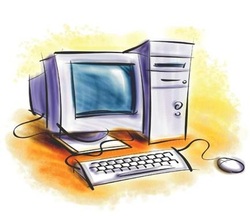Cache Memory
Cache Memory
Input- Output operations are very slow. CPU speeds are quite high compared to the access time of main memory. Thus the processor performance is limited by the slow speed of the main memory. To speed up fetching of instructions to CPU, a buffer or cache (pronounced as cash) is used. Normal RAM is expensive and is not fast enough to match the speed of CPU. To reduce the processing time, certain computers use costlier and higher speed memory devices to form a buffer or cache. This technique uses a small memory with extremely fast access speed close to the processing speed of the CPU. This memory is called cache and it stores data and instructions currently required for processing. Cache memory thus makes main memory appear much faster and larger than it really is. It improves the memory transfer rates and thus raises the effective processor speea.
The CPU searches cache before it searches main memory for data and instructions. Cache is physically located close to the CPU and hence access to cache is faster than to any other memory.
Advantages of Cache Memory
1. Cache memory is faster than main memory.
2. It stores the program that can be executed within a short period of time.
3. It consumes less access time as compared to main memory.
4. It stores data for temporary use.
Disadvantages of Cache Memory
1. It is very expensive.
2. Cache memory has limited capacity.
